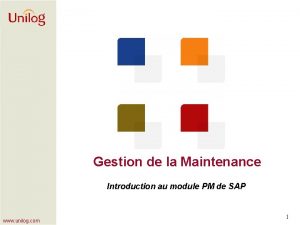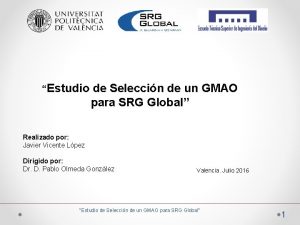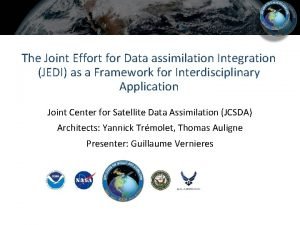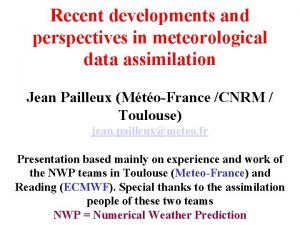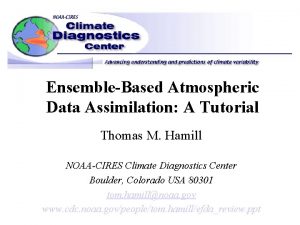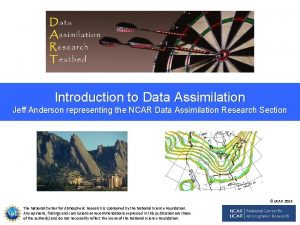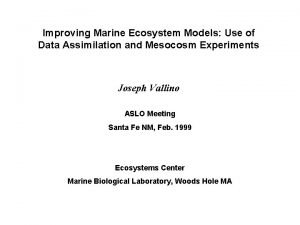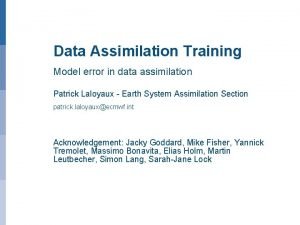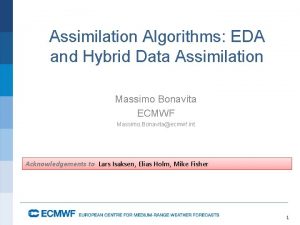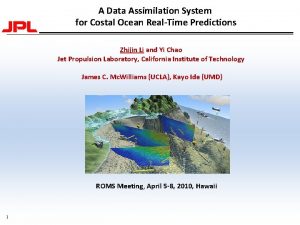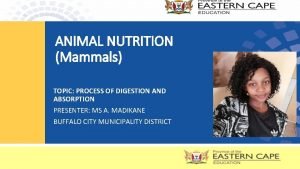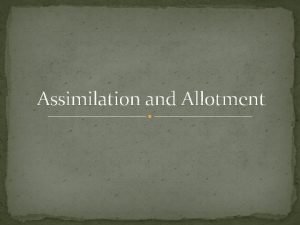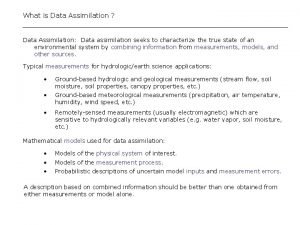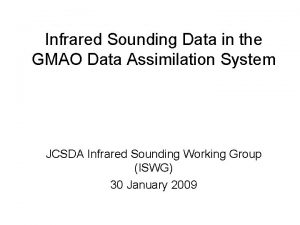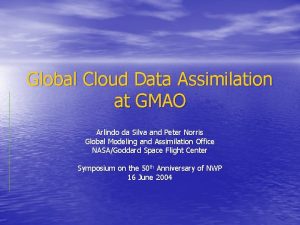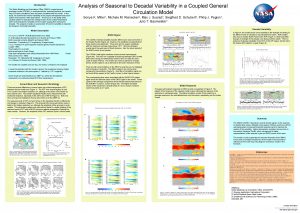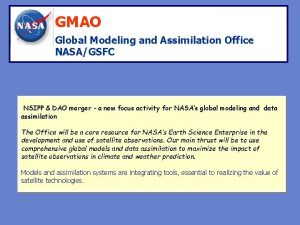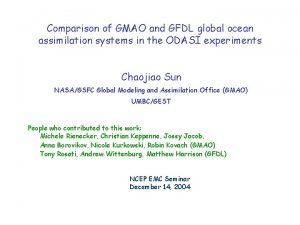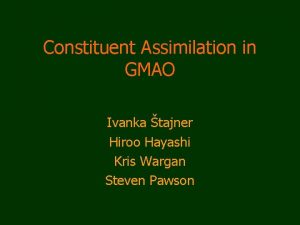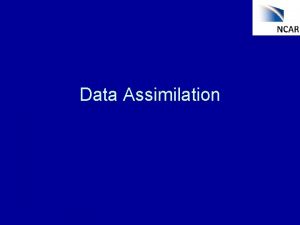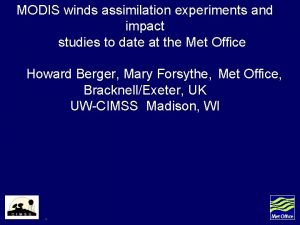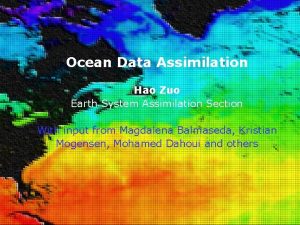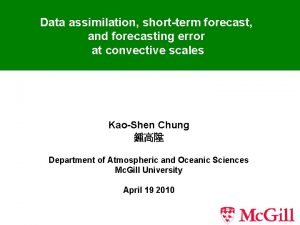Impact Experiments on GMAO Data Assimilation and Forecast
















- Slides: 16

Impact Experiments on GMAO Data Assimilation and Forecast Systems with MODIS Winds During MOWSAP Lars Peter Riishojgaard Yan-Qiu Zhu Global Modeling and Assimilation Office NASA Goddard Space Flight Center Presented by Ron Gelaro, NASA/GMAO

MODIS winds n n Polar orbiting platform (NASA Terra, Aqua), primarily intended for aerosol/clouds/land surface measurements Wind vectors calculated using geostationary feature tracking algorithms on high-latitude imagery from two MODIS channels u u n Coverage in high latitudes (beyond 65 o) where successive overpasses cover the same region u n 6. 7µ water vapor channel for clear-sky moisture field 11µ window channel for clouds Useful complement to geostationary satellite winds that drop off sharply beyond 58 o latitudes Image repeat frequency tied to orbital period of ~100 min. u Need for image triplets implies long acquisition time

(animation provided by Key et al. , CIMSS)

Unlike geostationary satellites at lower latitudes, it is not be possible to obtain complete polar coverage at a snapshot in time with one or two polar-orbiters. Instead, winds must be derived for areas that are covered by two or three successive orbits, an example of which is shown here. The whitish area is the overlap between three orbits. (slide provided by Key et al. , CIMSS)

Example 6 -hour data coverage; MODIS winds (left panel); all other satellite and conventional surface and upper air winds (right panel)

MODIS winds vertical distribution Water Vapor Observations Infra-Red Observations

GMAO MODIS winds experiments n MOWSAP (MODIS Winds Special Acquisition Period): November 8, 2003 -January 31, 2004 u u Winds generated by CIMSS and by NESDIS (pre-operational mode) « Same algorithm, different code bases « Different backgrounds for QC and height assignment Winds generated from MODIS Aqua and MODIS Terra imagery Assimilation experiments by GMAO, ECMWF, Met Office, CMC Experimental setup: 5 -day forecast every other day; 42 members in the ensemble « GMAO GEOS 4: fv. GCM+PSAS analysis (1 o x 55 levels)

Innovation statistics for raobs: Arctic RMS (obs – 6 hr fcst) control+MODIS control height (m) u-wind (m/s)

Innovation statistics for raobs: Antarctic RMS (obs – 6 hr fcst) control+MODIS control height (m) u-wind (m/s)

Forecast skill - ACC 500 h. Pa height NESDIS Winds

Forecast skill - ACC 500 h. Pa height at 120 hrs Northern High-Latitudes: 60 -90 N

Forecast skill - ACC 500 h. Pa height at 120 hrs Southern High-Latitudes: 60 -90 S

Forecast skill - ACC 500 h. Pa height at 120 hrs Southern Mid-Latitudes: 60 -90 N

Forecast error evolution Jan 21, 2004; Control (left), MODIS (right)

Summary n n n MODIS winds complement other observations in the high latitudes; more so in the SH than in the NH due to the current data sparsity Consistency of data delivery is acceptable Based on independent verification statistics, the quality of the information is acceptable Positive overall contribution to forecast skill u Substantial impact in the SH u Impact extends to entire hemisphere u Improvements in average forecast skill results primarily from improving the skill of the worst forecasts Timeliness remains an important issue; current delay is 4 -6 hours; some improvement possible via use of Direct Broadcast capability

Outlook n n n MODIS winds experiments with new GMAO assimilation system based on grid space analysis (GSI developed at NCEP) Case study diagnostics; busts? Data density/QC studies WV vs. IR winds Two-satellite winds End of Talk…Thank You.
 Gmao significado
Gmao significado Sap pm
Sap pm Mster
Mster Gmao prisma
Gmao prisma Jedi data assimilation
Jedi data assimilation Data assimilation
Data assimilation Data assimilation tutorial
Data assimilation tutorial Data assimilation
Data assimilation Data assimilation
Data assimilation Data assimilation
Data assimilation Data assimilation
Data assimilation Data assimilation
Data assimilation 4 parts of digestive system
4 parts of digestive system Absorption and assimilation
Absorption and assimilation Pluralism and assimilation
Pluralism and assimilation Allotment and assimilation
Allotment and assimilation Assimilation ap psychology
Assimilation ap psychology

